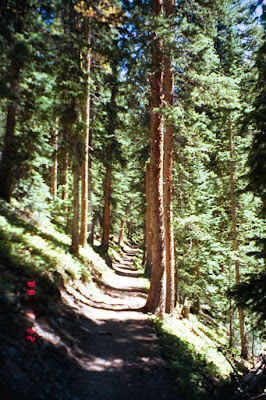Up until this week, I've been proud of my family's mining history.
I've enjoyed seeing mines as I hike the San Juan Mountains.
But now I'm realizing the continuing environmental impact of the miners who came in, found gold and silver, processed it with cyanide and arsenic and other toxic chemicals, and made their fortunes--or at least made a living.
What I love is the natural beauty of Colorado, but I'm learning that huge deposits of poisons lie inside these mines, plugged for now, but just waiting for enough water drainage to burst the portals open.
This reality sheds a grim light on summer recreation in Colorado. This blog was supposed to be about blue flax and dangers from invasive plants, but mining waste turns out to be a more frightening problem.
Allen Best analyzes the historical roots of the pollution today:
http://www.denverpost.com/opinion/ci_28617094/best:-kicking-the-environmental-can-down-the-river
The headline--"Kicking the environmental can down the river"--says it all.
Best is the only writer so far who addresses the whole historical perspective of mining in Colorado and its impact in the 130 years since the mines were first claimed.
My great-grandfather worked at the Black Bear Mine above Telluride--my other great-grandfather at a mine in Bedrock Gulch in the La Platas. For most of my life, these miners have been romantic figures, and I've regarded the mines with friendly interest.
But now I'm realizing that these mines and their owners just kicked the can down the road on environmental impact.
From now on, when I take mountain hikes past these old mines, I'm going to be worried and thoughtful rather than nostalgic.
But my brother Jim writes in an email:
"Well, ugly or not, disaster or not, I still love my leaky old Colorado mines! They're part of the heritage that opened up the state."




